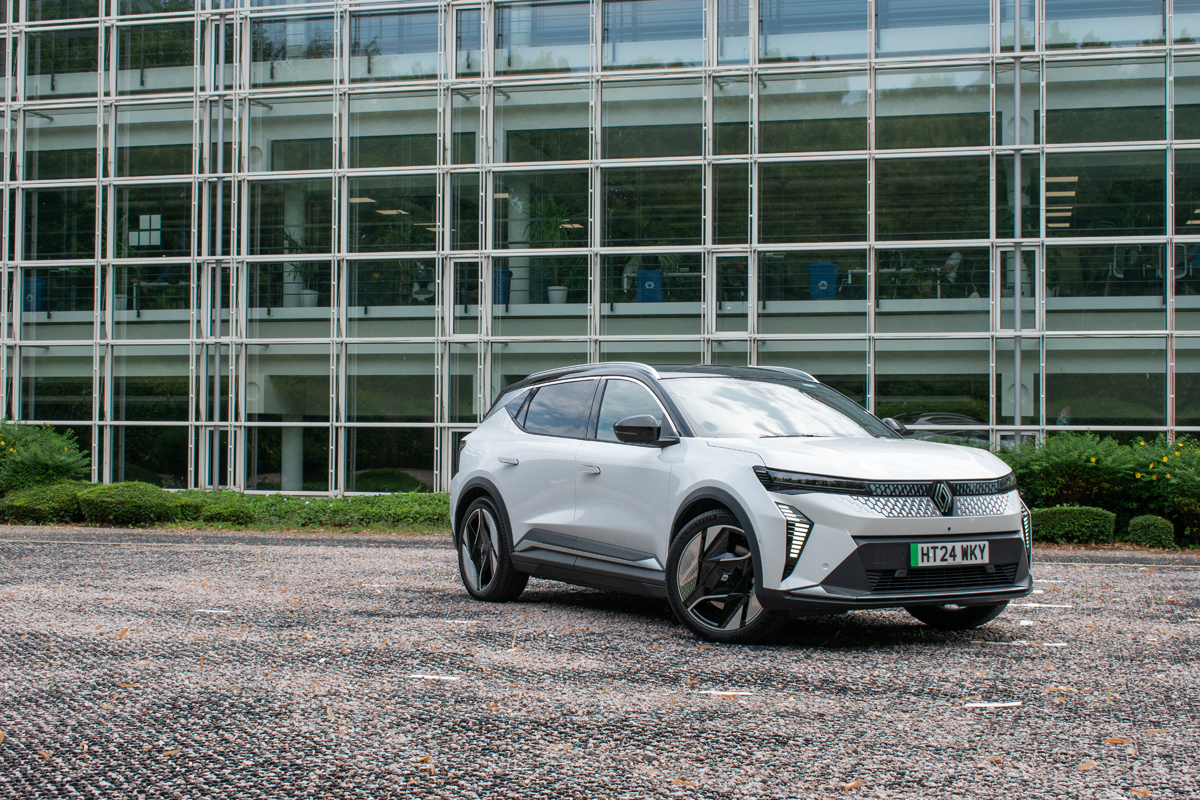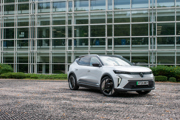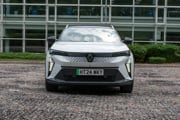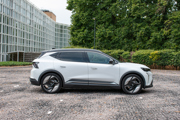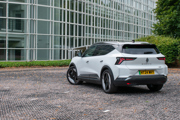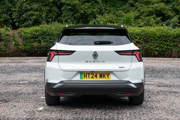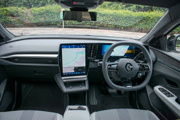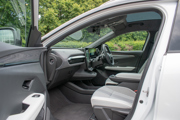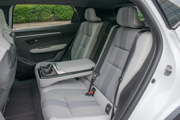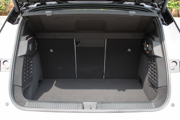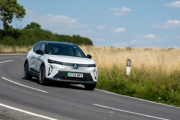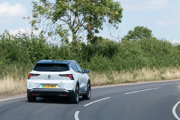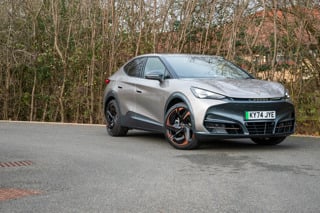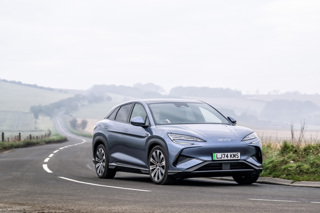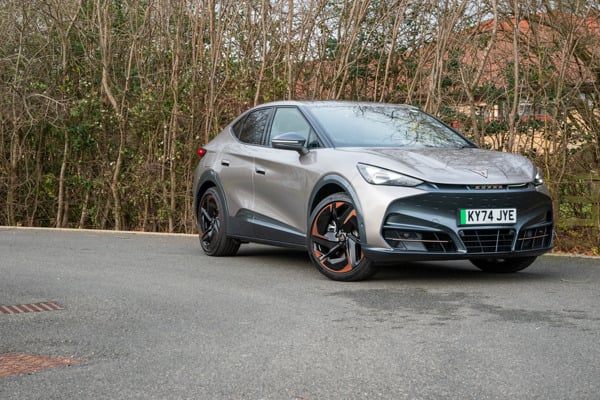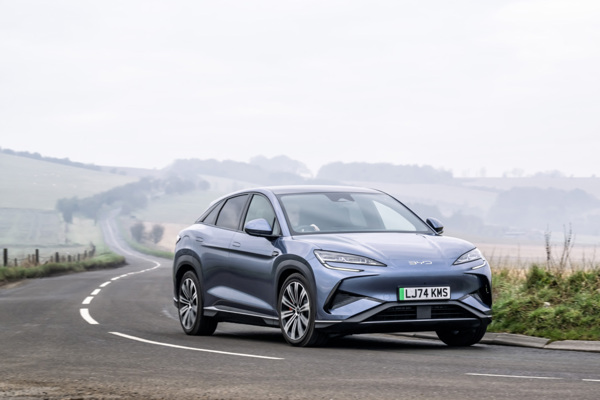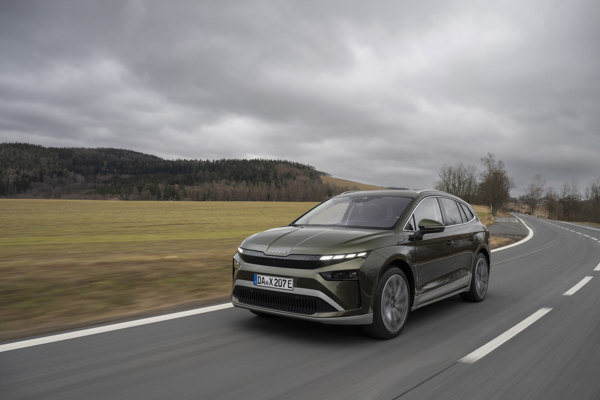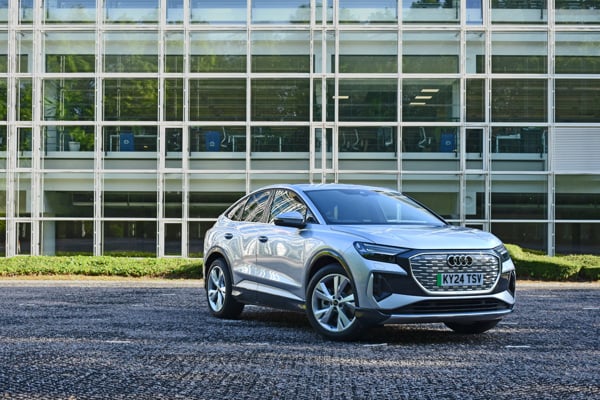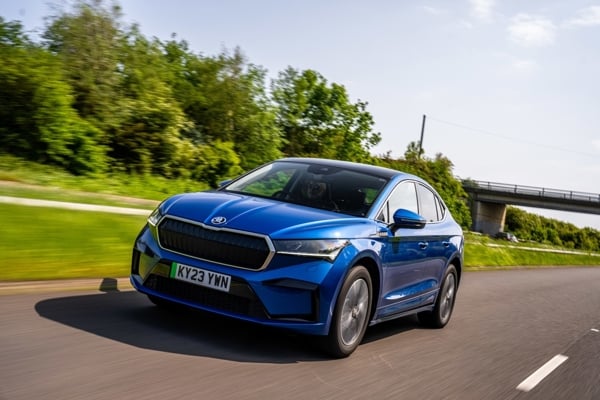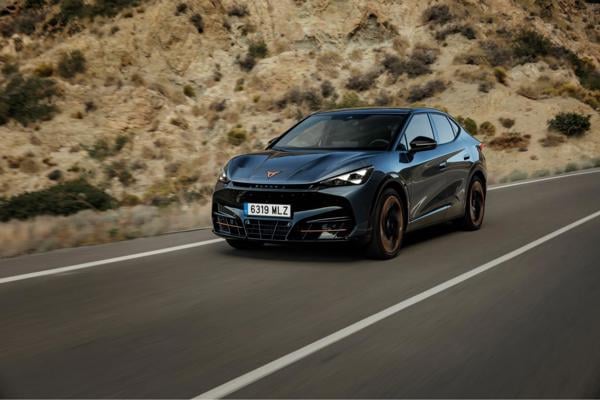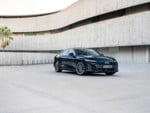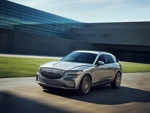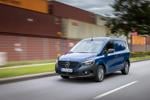Review
There are many upsides to being fortunate enough to test drive cars over the period of a few weeks or months, the one downside is having to say goodbye.
The Renault E-Tech Scenic impressed from day one and has lived up to expectations, with the 87kWh battery, long-range model we had on test delivering a reasonable return on advertised range.
Okay, it wasn’t the 369 miles claimed on our Iconic trim, which equates to just over 4.2mi/kWh. It was closer to 3.6mi/kWh when travelling around town (around 315 miles of range) and 3.2mi/kWh on the motorway (around 280 miles of range).
There was also the drop-off in colder weather, as previously highlighted, but there was never the need to stop and charge for the vast majority of journeys.
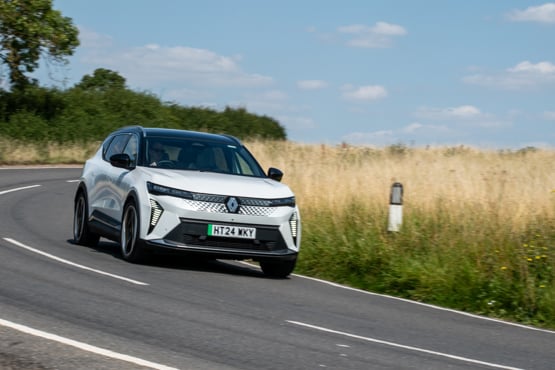
The smaller 60kWh battery, which has an official range of 260 miles, is slightly more than the Ioniq 5 Standard Range and the Enyaq 50.
Real-world testing suggests that version achieves somewhere 180 to 220 miles from a full charge, depending on your speed and how warm or cold the weather is.
Whatever option you consider, the Renault Scenic is a good car. It may not be the MPV of yesteryear, but it has got masses of head and legroom and comes with generous equipment levels.
Even the cheapest Techno model comes with a whole host of extras, including 19-inch alloy wheels, reversing camera, automatic LED headlights, metallic paint, keyless entry, heated front seats, blind spot warning, adaptive cruise control and a heat pump.
It is also incredibly good value, with a P11d price starting from £37,440 for the 60kWh Comfort range – more than £2,000 under the VED expensive car allowance threshold.
Just don’t expect something that’s exciting to drive, its suspension has been tuned for comfort rather than agility, meaning it’s a perfect match for our potholed roads.
Technology and infotainment
The interior of the Renault Scenic is marked out by its 12.3-inch driver information display and 12-inch OpenR multimedia screen.
A standard feature, it is powered by Google services with Google Maps, Google Assistant and Google Play store.
Over-the-air updates keep the system fully up to date, while wireless smartphone replication and a wireless smartphone charger ensure drivers are always connected.
The journey planner has been optimised by Google and Renault engineers specifically for electric vehicles (EVs) and takes into account the need to pre-condition the battery temperature when nearing charging stops on a planned journey.
This allows the system to make smarter decisions about where to charge, optimising charging time and shortening your journey time as a result.
Charging stops can be selected based on their power rating and the payment methods the driver prefers. This can all be done directly on your phone before leaving the house, with the itinerary sent to the car automatically.
Weather information supplied by Google also helps to accurately estimate the battery’s remaining range by taking information such as wind direction and speed into account.
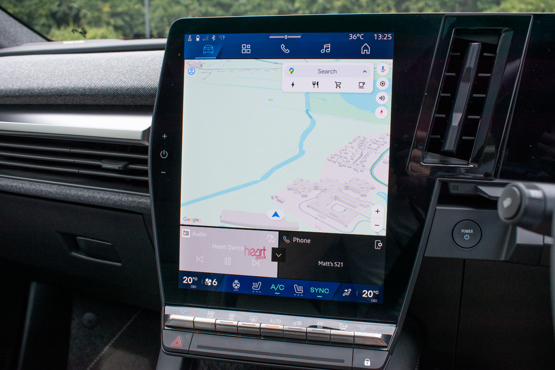
Additional standard fitment technology for the Scenic E-Tech also includes a frameless electro-chromatic rear-view mirror, rear-view camera, front and rear park assist, heated front seats and steering wheel, paddle shifters for regenerative braking, automatic wipers and electric boot opening.
The top of the range Iconic trim, which we have on test, also offers hands-free parking, a 360-degree camera and a smart rear-view mirror.
The Scenic E-Tech comes with up to 30 advanced driver assistance and safety systems advanced driver assistance systems, including traffic and speed sign recognition, driver attention alert, distance warning alert, lane departure warning, lane keep assist, active emergency braking system with pedestrian and cyclist detection and blind spot warning.
The new motorway and traffic assistant, Active Driver Assist, combines adaptive cruise control, Stop and Go and lane centring to adapt to the road.
At low speeds, such as in a traffic jam, the lane centring system can be adjusted by the driver to keep the vehicle to one side of the road to ease the passage of emergency vehicles.
Described as an ‘intelligent contextual adaptive cruise control’ system by Renault, it can automatically adjust the vehicle speed to account for distance between other cars.
The intelligent function pairs geolocation data with a dedicated map so the vehicle can predictively adapt to the road ahead and plan for upcoming roundabouts, turns, and speed limit changes.
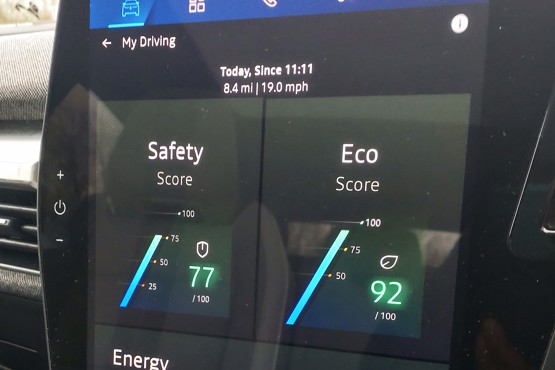
To aid driver performance, there is also a ‘safety score’ and ‘eco score’ delivered after each journey through the infotainment screen.
To achieve a safety score out of 100, the car will deduct points for drivers who set off any of the on-board safety alerts or driver assistance settings, or are inattentive.
Points are knocked off for transgressions such as getting too close to the car in front, crossing white lines, failing to pay attention or breaking the speed limit.
The Renault Scenic E-Tech also provides its driver eco score out of 100 based on driving habits. However, how I managed to score 97 out of 100, with an electric economy rate of just 1.9 miles per kWh is a mystery.
Real-world range and efficiency
The ‘long range’ version of the Renault Scenic E-Tech, we have on test, boasts an official range of up to 369 miles, but the colder weather and a majority of motorway miles has left it somewhat shy of that.
Much like an internal combustion engine (ICE) car, the ‘fuel’ economy of an electric vehicle (EV) is impacted by environment and driving style.
The 87kWh battery would be expected to achieve the WLTP range of up to 369 miles on Iconic trim (it varies slightly depending on trim level). That equates to just over 4.2mi/kWh.
In a Fleet News group test, the Scenic was the least efficient car when compared, in real-world conditions, with the Tesla Model Y and Ford Explorer - managing 3.3mi/kWh.
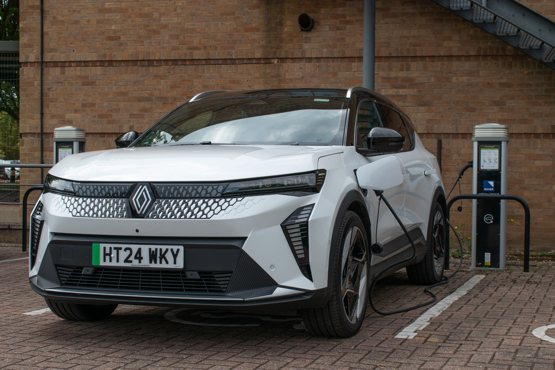
Based on my experience with our long-term test car, in warmer weather and the right driving style, you’d certainly be expected to be able to achieve something close to or above 3.7mi/kWh (329 miles).
In autumn, when the Scenic first joined the Fleet News test car fleet, 3.5-3.6mi/kWh when travelling around town was not unusual.
An average electricity economy rate, with a high degree of motorway miles, of 3.2mi/kWh has proven more attainable.
However, the colder weather coupled with a heavy root foot and even more motorway miles has seen that shortfall grow, with 2.7-2.8mi/kWh (240 miles) a new low.
That would equate to a 35% shortfall on the claimed combined but minor alterations to driving style resulted in a much-improved return of 3.1mi/kWh, despite the conditions.
Either way, the range on offer has been more than enough to cater with 99.9% of journeys without having to dip into expensive public charging stations.
Practicality and safety
Practicality for the Scenic is intrinsic to its DNA and new Scenic doesn’t disappoint even if it is a bit smaller than competitors such as the Tesla Model Y and Kia EV6.
It offers plenty of room in the front for two six-footers and lots of storage space, including door bins that can each take a large bottle and a deep storage cubby under the centre armrest.
There is also one cupholder with the possibility to create another thanks to some moveable dividers situated in a long storage tray on the lower centre console.
A wireless phone-charging is perched above, just below the infotainment system.
There is electric lumbar adjustment on all trim levels, with our top test spec Iconic trim also offering full electric seat adjustment and a massage function.
Rear seat passengers, meanwhile, benefit from lots of head and leg room in the Scenic even if, unlike the Model Y and EV6, the SUV’s seats don’t recline.
A fold-down centre armrest offers two USB-C charge points, two cupholders and storage for rear seat passenger devices. It also has two tablet holders for keeping kids entertained while on those longer journeys watching a film.
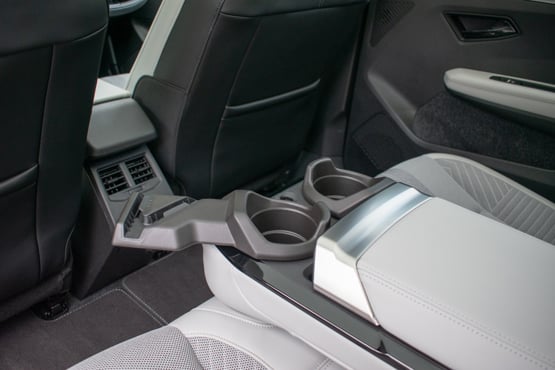
In addition, there are map pockets and two smaller pockets on the backs of the front seats for further stowage.
I also like the high driving position the Scenic offers, which provides good visibility over the bonnet and the road ahead. The only problem being the substantial windscreen pillars which can restrict your view at junctions and roundabouts.
Chunky rear pillars and a pokey rear windscreen can also hamper your visibility, but the rear-view camera and front and rear parking sensors help mitigate the problem. Our test car in Iconic trim also comes with a digital rear-view mirror and a 360-degree camera.
The Scenic’s 545-litre boot is slightly larger than that of the EV6 and Hyundai Ioniq 5, while not being far off the Skoda Enyaq’s carrying capacity. There are a further 38 litres of storage underneath the boot floor, which is perfect for the Scenic’s charging cable.
For the times when you need more space, however, the Scenic’s rear seatback can be folded down in a 40/20/40 split.
Safety experts at Euro NCAP have awarded the Scenic a maximum five out of five star rating based on updated results from the Renault Megane E-Tech test.
It comes with a lot of safety technology and driver assistance as standard, including adaptive cruise control, lane keep assist, blind spot monitoring and an active emergency braking system with pedestrian and cyclist detection.
Major advantage over rivals
The fully electric Renault Scenic E-Tech not only performs well on the road, it also works well on paper, outperforming its rivals when running costs are analysed.
The Scenic is the most cost-effective electric model in its class over a typical four-year/80,000-mile company car cycle, according to data from Cap HPI.
The Fleet News Car Running Cost Calculator gives running costs of 34.9p per mile (ppm) for the Scenic E-Tech techno (60kWh) Comfort Range.
The 87kWh Long Range variant is also ahead of the class, with total running costs of 36.8ppm for the Techno trim, 40.6ppm for the Alpine and 42.7ppm for the Iconic, which we have on test.
Key rivals include the Ford Explorer (43ppm), Nissan Ariya (44ppm), Peugeot e-3008 (43ppm), Tesla Model Y (51ppm), Skoda Enyaq (45ppm) and VW ID4 (47ppm).
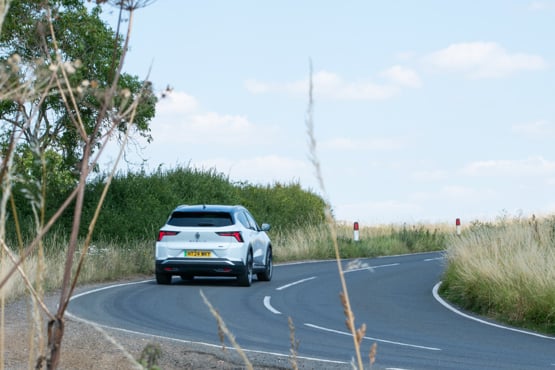
Among this pool of vehicles, the Scenic E-Tech electric has the strongest residual value (RV). A techno Long Range model has a predicted value after four years of £15,900, equating to a depreciation of 31ppm (80,000 miles).
Service, maintenance and repair (SMR) costs are also class leading for the Scenic E-Tech electric. Fleet managers can expect to pay 2.9ppm during a typical cycle.
Estimated charging costs for the five models are more closely aligned, with all models costing less than 3ppm.
At £37,440, the Scenic 60kWh E-Tech Techno Comfort Range has the lowest P11d value among its pool of rivals.
The 87kWh Techno trim has a P11d price of £40,940; the Alpine P11d price is £43.440; and the Iconic, which we have on test, has a P11d price of £45,440.
|
Vehicle |
P11d value |
Depreciation |
SMR |
Fuel |
Total running cost |
WLTP range |
|
Renault Scenic E-Tech techno Long Range |
£40,940 |
31ppm |
2.9ppm |
2.4ppm |
36.8ppm |
379mi |
|
Ford Explorer Select Extended Range |
£45,820 |
37ppm |
4.4ppm |
2.0ppm |
43.4ppm |
374mi |
|
Nissan Ariya Engage 87kWh |
£44,590 |
38ppm |
3.2ppm |
2.6ppm |
44.3ppm |
330mi |
|
Peugeot e-3008 Allure Std Range |
£45,795 |
37ppm |
3.7ppm |
2.4ppm |
43.6ppm |
326mi |
|
Skoda Enyaq 85 Edition |
£45,865 |
37ppm |
5.0ppm |
2.2ppm |
45.1ppm |
358mi |
|
Tesla Model Y Long Range |
£52,935 |
43ppm |
5.1ppm |
2.4ppm |
51ppm |
331mi |
|
VW ID4 Match Pro |
£45,820 |
39ppm |
5.0ppm |
2.3ppm |
47.2ppm |
349mi |
Renault Scenic E-Tech Iconic joins our fleet
The Renault Scenic joins the Fleet News long-term test fleet having been revealed as ‘European Car of the Year’ at the Geneva Motor Show earlier this year.
With such a big billing, there are high expectations, but the Scenic has not failed to impress during its first few weeks on test.
The only head scratcher is 2024 Scenic seems to have very little to do with the popular MPV of the 1990s which shares its name. This is not an MPV.
What you do have, however, is a very roomy, long-range fully electric car that is brimming with technology.
The 87kWh battery and a 220hp motor in the long-range model, which we have on test, combine to deliver an official combined range of 379 miles.
Having been driving the Scenic now for a couple of weeks, both around town and on the motorway, 340-350 miles of range is achievable, but driving style is key and harsh acceleration can see that easily fall below 300 miles.
We will be putting it through its paces over the next few weeks to get an idea of what your average driver should expect in real world conditions and how close we can get to that WLTP figure.
Good news is it comes with a heat pump as standard, helping to recover heat and energy that would otherwise be wasted.
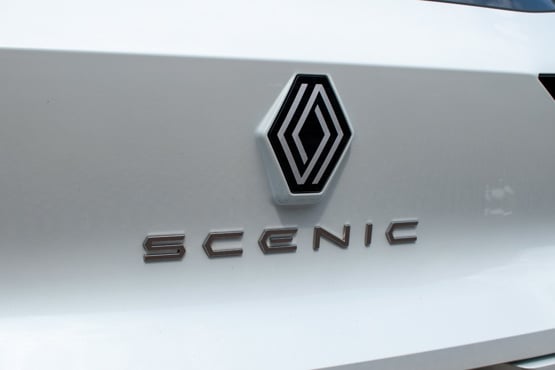
Renault gives you’re the choice of three trims, starting with the generously-equipped Techno trim, the Esprit Alpine and Iconic, which is what we have on test.
Iconic comes with hands-free parking, 360-degree camera, a smart rear-view mirror and the rather cool Solarbay opacifying sunroof, which is not only the kind of neat, new technology demanded by next generation vehicles, it’s also rather green.
The panoramic roof uses recycled glass in its manufacture, with 50% of it made of waste from plate and automotive glass production, while 90% of it can be recycled at the end of its life.
In addition, it is 6-8kg lighter than a conventional panoramic roof equipped with a mechanical blind.
What has also impressed is the OpenR Link multimedia system, which is standard across the three trims. It features more than 50 apps and is accessed through a 12.3-inch driver information display on the dashboard and a 12-inch vertical central screen.
The system is really easy to navigate, but perhaps the only one complaint (and it is very minor) is the lack of knob for volume control.
Outside, the Scenics angular features detract from a boxish back that delivers an enormous amount of legroom for rear seat passengers.
On-the-road, meanwhile, you can’t fault the ride and, considering the size of the battery, it is well balanced for comfort and agility.
Specs
| Manufacturer | Renault |
| Model | Scenic E-Tech Estate |
| Specification | Renault Scenic E-Tech Estate 160kW Iconic 87kWh Long Range 5dr Auto |
| Model Year | 2023.00 |
| Annual VED (Road tax) | £10 |
| BIK List Price | £45,430 |
| Range | 369.00mile(s) |
| CO2 | N/A |
| BIK Percentage | 2% |
| Insurance Group | N/A |
| CC | 1 |
| Fuel Type | Electric |
| Vehicle Type | Medium SUV |
| Luggage capacity (Seats up) | 545litres |
| Doors | 5 |
Running Costs
| P11D | £45,430 |
| Cost per mile | 48.23ppm |
| Residual value | £20,675 |
| Insurance group | N/A |
| Fuel Type | Electric |
| Cost per mile | 144.37ppm |
| Fuel | 2.56ppm |
| Depreciation | 140.35ppm |
| Service maintenance and repair | 1.46ppm |
Rivals
Info at a glance
-
P11D Price
£45,430
-
MPG
N/A (WLTP) -
CO2 Emissions
N/A -
BIK %
2% -
Running cost
3 Year 60k : £20,675 4 Year 80k : £16,850 -
Fuel Type
Electric -
Range
369.00mile(s)



